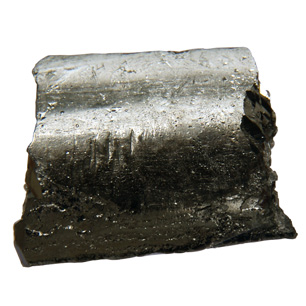Antimony
| EPA Maximum Contaminant Level (MCL) |
0.006 mg/L |

Antimony is a toxic, lustrous grey semi-metallic element. Antimony trioxide is the most common compound form, used as a flame retardant. It's also found in batteries, pigments, glass and ceramics.
Antimony enters drinking water as a result of human activity, especially through coal burning and the smelting of antimony-containing ores. Other sources include discharge from petroleum refineries, fire retardants, ceramics, electronics and solder.
Health Effects of Antimony
Antimony can have effects similar to arsenic, its elemental neighbor. Oral exposure can trigger vomiting, abdominal cramps, diarrhea and cardiac toxicity.
It can also have long term effects on blood. According to the EPA:
Some people who drink water containing antimony well in excess of the maximum contaminant level [0.006 milligrams per Liter (mg/L)] for many years could experience increases in blood cholesterol and decreases in blood sugar.
Water Treatment for Antimony
The EPA recommends coagulation/filtration and reverse osmosis for the treatment of antimony.
Sources: EPA, WHO, Wikipedia, Photo: images-of-elements.com
Site Index
Filtration Systems
- Aeration for Iron & Sulfide
- Backwashing Filters
(whole house & well units)
- Chlorine & Chemical Injectors
- Countertop Water Filters
- Garden Hose Filters
- Reverse Osmosis, Residential
- Reverse Osmosis, Commercial
- Shower Filters
- Specialty Filters
- Ultraviolet Systems
- Undersink Filters
- Water Softeners
- Whole House Filters
Cartridges
Parts
- Replacement Parts
- Faucets
- Filter Media
- Fittings
- Housings
- O-rings
- Pumps
- Pura UV
- R.O. Parts
- R.O. Tanks
- R.O. Booster Pump
- VIQUA UV